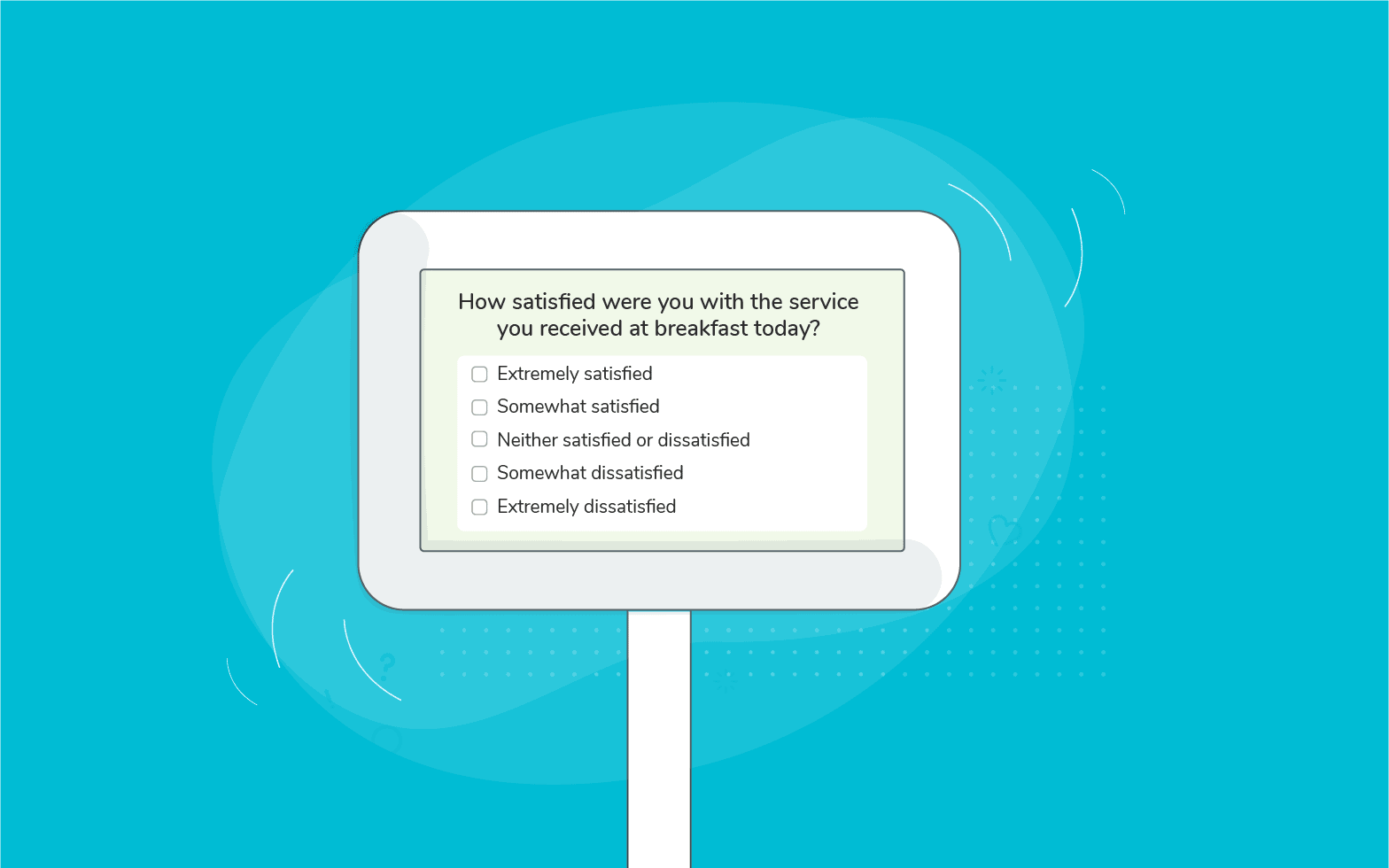WHAT IS A LIKERT SCALE?
The Likert Scale is usually a 5 point scale to measure agreement, or disagreement to a statement or question.
The responses can help you understand customer attitudes and how satisfied they are with specific areas of your business.
LIKERT SCALE EXAMPLES
You can use Likert Scale questions in different ways depending on what you’re trying to find out.
Below are a few examples of different styles of Likert Scale questions:
How satisfied or dissatisfied are you with your [insert product]?
- Very satisfied
- Somewhat satisfied
- Neither satisfied nor dissatisfied
- Somewhat dissatisfied
- Very dissatisfied
How helpful was the concierge during your stay?
- Extremely helpful
- Very helpful
- Somewhat helpful
- Not very helpful
- Not at all helpful
I was satisfied with the knowledge of the speakers at the conference.
- Strongly agree
- Agree
- Neither agree or disagree
- Disagree
- Strongly disagree
WHY USE LIKERT SCALE QUESTIONS?
Instead of using simple Yes/No questions, Likert Scales can provide you with more detail about specific topics. You can find out what customers think of your new branding, a new product, customer service, a meal or special event.
They’re not just relevant to customers, you can also use them within employee surveys. Ask what your team think about recent changes, the level of training available to them or the benefits package you offer.
Likert scales allow you to dig deeper whilst saving open ended questions for when respondents really want to give more detail. You can also spot trends and see how certain areas perform over time.

5, 7 OR 9 POINT SCALE?
Most people use a 5 point scale, some a 7 or 9 point scale, in their Likert Scale. It’s important to use an odd number as you need a midway point in the scale. Respondents might not have strong feelings either way, forcing them to choose positive or negative could skew your results.
Five points are normally enough, after all how much difference is there between Good, Very Good and Excellent, Good and Very Good or Excellent is usually sufficient.
However, in some cases there may be an instance when you do need 7 points, 9 is probably overkill.
ENSURE YOU GET USEFUL RESULTS
It’s important to mix the style and type of questions throughout your survey. If you used Likert Scale questions throughout your survey, respondents could get bored, stop thinking about their answers and ruin the quality of your data.
Think about what you’re asking, what sort of detail you want from each question and decide whether to use Likert Scale, NPS or CSAT, matrix or open ended questions. Or you could use experts, such as Avius Surveys, to ensure you’re going to get quality data with useful insights.
By Luke Williams
 Join us at IAAPA Expo in Barcelona, Spain. Booth 2-1730. 22-26 September.
Join us at IAAPA Expo in Barcelona, Spain. Booth 2-1730. 22-26 September.

